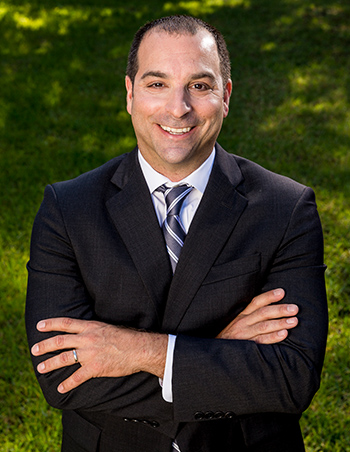Aiming high: Closing sales with company principals
Aiming high: Closing sales with company principals

Namey Financial Group, Inc. • H. Beck, Inc.
Read full biography below
 Here, in north Florida, we get a lot of clients who are retirees, or are near retirement, referred to us—people who need help with distribution plans, growth, and protection of their accumulated assets. They are entering a new phase of life and have a lot of important questions about retirement—will their assets last? Should they be engaged in equity markets? Can they grow assets without having to worry about the next market crash?
Here, in north Florida, we get a lot of clients who are retirees, or are near retirement, referred to us—people who need help with distribution plans, growth, and protection of their accumulated assets. They are entering a new phase of life and have a lot of important questions about retirement—will their assets last? Should they be engaged in equity markets? Can they grow assets without having to worry about the next market crash?
We have also always had a strong focus on small-business owners of companies with anywhere from 25-400 employees—for their company 401(k) needs as well as for wealth management for owners and key executives.
Follow-through is a must. You need to do what you say you will do with respect to servicing the company’s qualified plan. Then you are on solid ground to ask for the business of personal wealth management for the owner and executives. A holistic financial plan—insurance needs, tax-reduction strategies, estate planning, asset management—with a single point of contact is efficient and effective for the business owner and for my practice.
The bottom line is we have access to many different money managers. We evaluate the best match for our clients to help fit their goals and objectives. And they, then, actively manage the account based on their quantitative systems.
They have the flexibility to move money to better-performing sectors, go to cash, or allocate more to alternative investments—all depending on the strategies we select for the client’s portfolio. But the key factor is that they are implementing their strategies at a high level and with a very disciplined process. I only utilize carefully selected money managers for my clients. Those managers employ exhaustive due diligence to select investment strategies.

I like to explain to clients that if they have a loss of 50% in their portfolio, it takes far more than a 50% increase to get back to even—it takes about 100%. The idea is to keep projected returns in a much tighter range of performance, with less volatility, than just by following the markets. This is where active management comes into play, and this is the message I am giving to clients. This does make sense, especially for those with a lot of concerns about retirement and the safety of their principal.
When 2008 hit, he had a double whammy of weaker business results and a portfolio almost cut in half. At the time, he had kids in college as well as other cash-flow needs. He had to put off selling his business and retiring and instead took out loans on his business and his building.
Would active management of his portfolio have been the answer to all of his problems? No, but it certainly could have helped put him in a better position to deal with a difficult financial situation.
Instead of having to liquidate investments at fire-sale prices, active management is designed to manage the risk that could have mitigated his portfolio losses. While drawing upon assets before retirement is never a great solution, in this case, it was necessary. With the right financial planning upfront, we hope most clients never have to experience that type of situation.
Daniel Namey, president at Namey Financial Group, Inc., has over 20 years of experience advising clients on wealth planning and retirement issues, with a particular expertise working with owners of closely held corporations.
Disclosure: Securities and investment advisory services offered through H. Beck, Inc., member FINRA/SIPC and an SEC-registered investment advisor. H. Beck, Inc., and Namey Financial Group, Inc., are not affiliated. Investments will fluctuate and when redeemed may be worth more or less than when originally invested.
Post-publication note: Mr. Namey has been registered with LPL Financial LLC since 2019.
Photography by Ryan Ketterman

